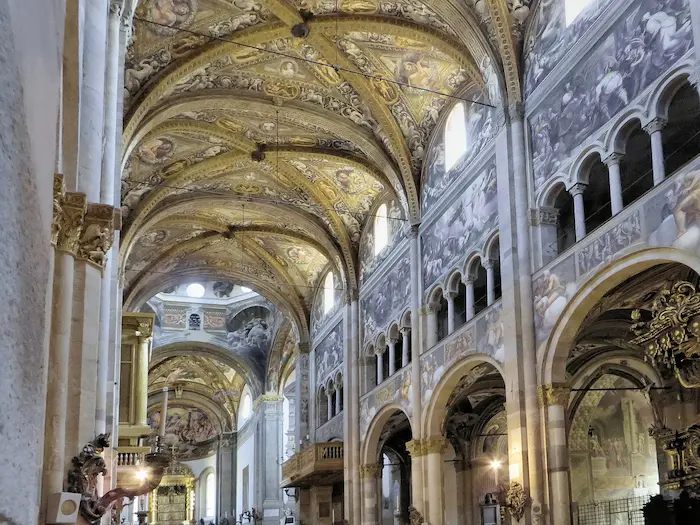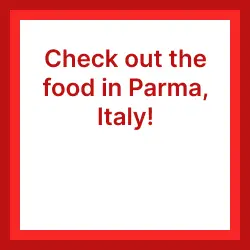If you enjoy the thought of wine and dining in a small villa overlooking the Italian countryside, Parma, Italy might have to be your next travel destination!
Located in the region of Emilia-Romagna in Northern Italy, Parma is well known for its delicious food: specifically, Parmigiano Reggiano cheese (Parmesan Cheese) and Prosciutto di Parma (Parma Ham). Along with the food, Parma has a rich history to be discovered through museums, exhibits, historic buildings and more!
Read the articles down below to find out if Parma is the place for you.

Restaurants in Parma
Everyone comes to Italy for the art and food so why not visit the top-rated restaurants during your stay in Parma!
Ristorante Angiol d’Or rated 4.6 stars is fit for every occasion, from dinner dates to family outings. They offer a variety of traditional Italian food.
Osteria del Teatro rated 4.3 stars is the perfect place for business lunches or company gatherings, it encapsulates authentic Parma food and hospitality. The restaurant overlooks Piazza San Bartolomeo and uniquely uses vinyl records as placemats to create a musical environment.
daMAT Bistrot rated 4.4 stars and has 3 locations, a bistro, kiosk and restaurant. They offer traditional Italian dishes, a wine and cocktail bar. There is also a kiosk with ice creams, drinks and more!

Parma Recipes
Recipes have held a special place in every cook’s heart since the beginning of cooking. It’s a way to recreate your favourite dish perfectly every time and reconnect with the ancestors who created the recipe to begin with. I want to provide you with a couple traditional recipes using some of Parma’s world renowned ingredients.
Rosa Di Parma is a great example of using Parmesan Cheese and Parma Ham. Tortelli Di Erbetta is a traditional dish from Parma, fresh pasta filled with ricotta, parmesan and chard. To end of with something sweet, The Duchess Cake, named after Duchess maria Luigia of Parma; it is a rich, slightly alcoholic cake filled with hazelnut and chocolate.
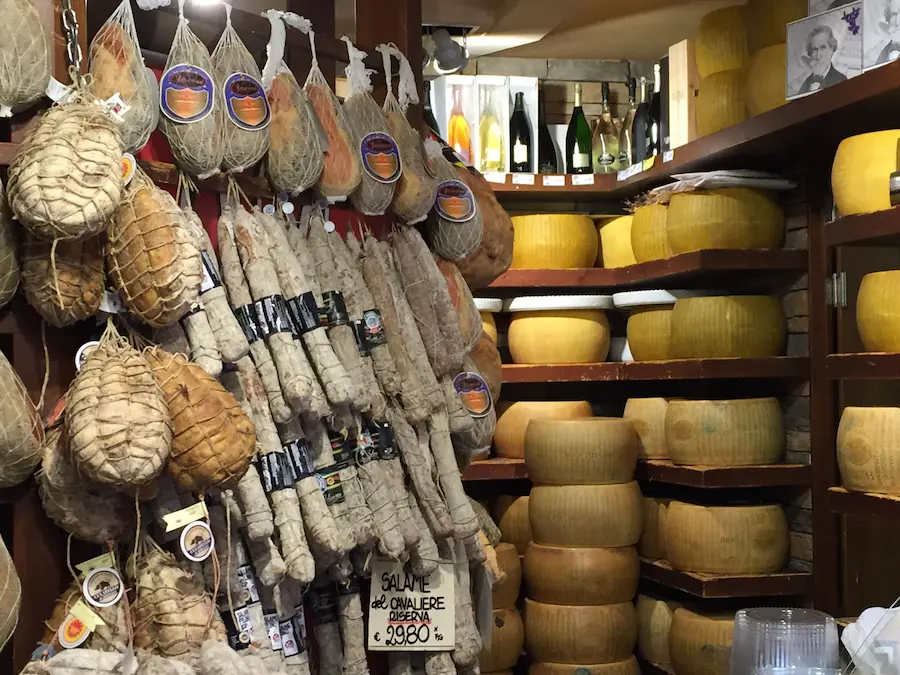
Museums in Parma
Calling all foodies! As a lover of classic Italian food, you are going to want to check out these museums to gain a rich history on all things meat, cheese and tomato. Parma has 4 individual museums dedicated to Italian gastronomy:
- Parmigiano Reggiano: learn the whole process of making parmesan cheese in an original cheese factory.
- Parma Ham: You'll know everything from pig breeds to curing meat.
- Tomato: learn the journey of the tomato, from preserving its freshness to adding it to your favourite dishes.
- Felino Salami: Learn how salami became to be and how it is produced today.
Each Museum displays a story of these products, how they came to be and their importance in Italian history.
The History of Parmesan
Parmesan cheese has a rich and complex taste as well as history. It started out as a few simple ingredients to create a well-preserved cheese to a world-renowned product loved by millions. So famous that regulations had to be put in place to claim its authenticity. There is a reason why it has been nicknamed the “King of Cheese”.
Soon after its creation, Parmesan cheese rapidly spread all over Europe. In order to differentiate between real and fraudulent parmesan there were a couple conditions set in place:
- In 1612 the Duke of Parma established certain places where “Parma” could be used in a products name.
- Genuine cheese is aged for at least 12 months, if this is not the case the crust must be marked with an “X”.
- To ensure its coming from the correct part of Italy and is made with traditional methods, look for the DOP (Denominazione di Origine Protetta) mark on the crust.
- It will always be called Parmigiano-Reggiano if it is genuine.
Here are some more facts about Parmesan Cheese:
- Only 329 dairies world-wide are allowed to make this cheese.
- It takes around 550 litres of milk to create one wheel of parmesan.
- Parmesan is essentially lactose free, and usually does not cause problems for people who are lactose-intolerant.
- Parmesan cheese usually pairs well with fruits, vegetables or nuts.
Parmesan cheese has a rich and complex taste as well as history. It started out as a few simple ingredients to create a well-preserved cheese to a world-renowned product loved by millions. So famous that regulations had to be put in place to claim its authenticity. There is a reason why it has been nicknamed the “King of Cheese”.

What's New & Exciting!
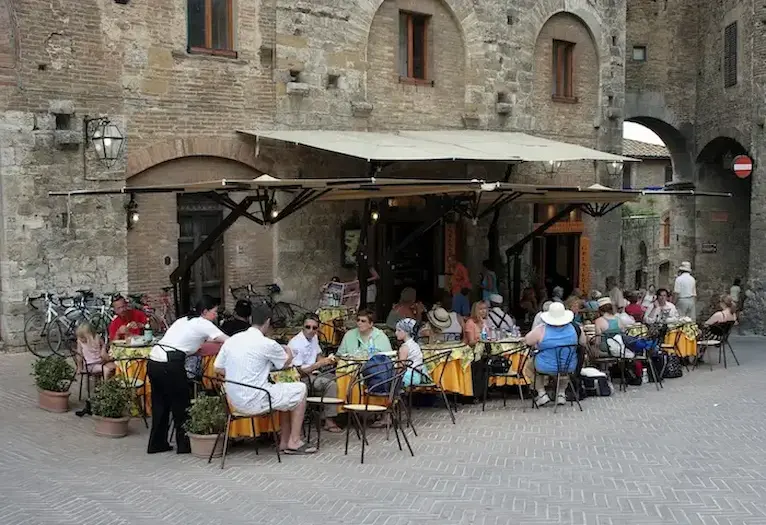
New Restaurants!
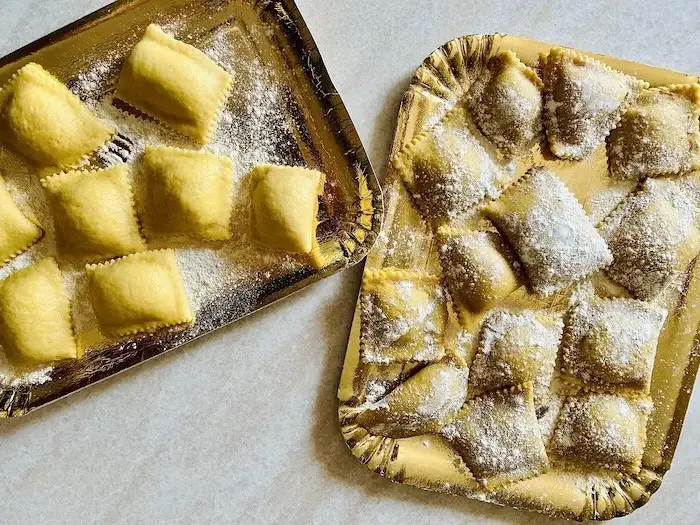
New Recipes!
